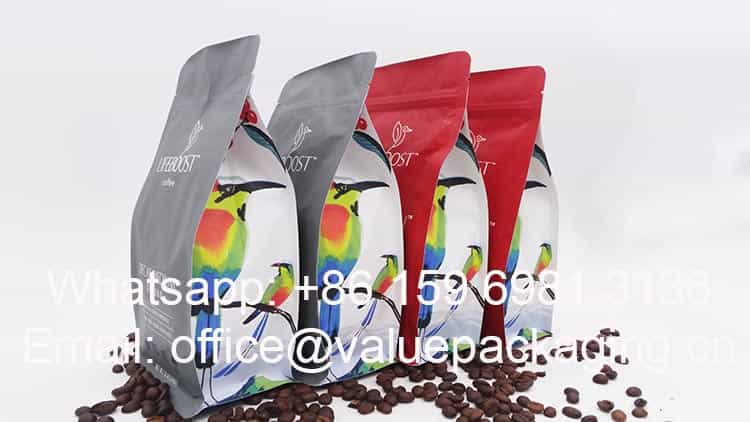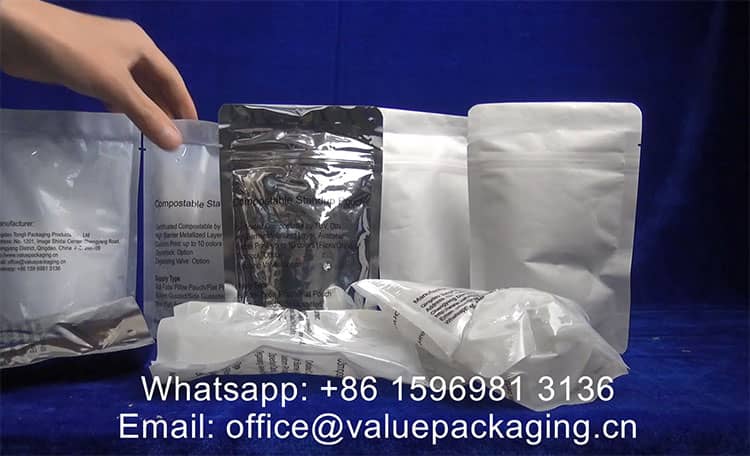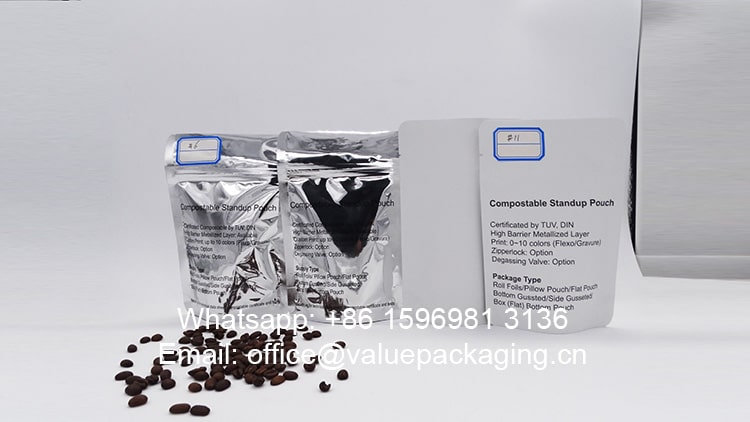Biodegradable flexible pouches are becoming cost-effective for an increasing number of products, thanks to the reduction in their production costs. Some customers may wonder if they can use these compostable flexible pouches for frozen products, like frozen fruits, vegetables, dog treats, French fries, and individually quick-frozen chicken breasts.
In the current market, many frozen foods are packaged in surface-printed, single-layer polyethylene (PE) film. Some may use multilayer flexible pouches, which offer a better print effect of the customer’s artwork on the inner side, to create a more impressive branding and profile.

Still, the questions remain. Are compostable flexible pouches well-intended for frozen treatment? Are they strong enough to be good protection during transit? How are their mechanical properties after restoration from freezing?
In this post, we will perform a freezing test on our multilayer biodegradable flexible pouches and perform a drop test to check the mechanical strength after restoration. Let’s go.
Biodegradable Pouch Samples
Our compostable flexible pouches are primarily produced from biopolymer film materials, including kraft paper, metallized paper, cellulose, metallized cellulose, BOPLA film, PLA+PBAT film, and PBS film. The following are some examples of commercial compostable foil laminates.
- Kraft Paper/PLA+PBAT
- Kraft Paper/BOPLA
- Cellulose/PLA+PBAT
- Kraft Paper/PBS Foil
- Metallized Paper/PLA+PBAT
- BOPLA/PLA+PBAT
- Cellulose/Metallized Cellulose/PLA+PBAT
- Kraft Paper/Metallized Cellulose/PLA+PBAT
- Cellulose/Metallized Paper/PLA+PBAT
- Kraft Paper/Cellulose/PLA+PBAT
- Kraft Paper/Cellulose/PBS
- Metallized Paper/Cellulose/PLA+PBAT

Here, we pick 3 types of the compostable flexible pouches, with foil laminates as below, to perform the freezing test.
- Left: Cellulose30/PLA+PBAT60
- Middle: Cellulose30/Metallized Cellulose20/PLA+PBAT60
- Right: Kraft Paper45g/Cellulose20/PLA+PBAT60
Frozen Treat Conditions of Biodegradable Pouch

We will fill the biodegradable pouches with water, and place them in the refrigerator under the following conditions.
Freezing Temperature: -18 ° Celsius (- 0.4 ° Fahrenheit)
Period: 72 Hours
Drop Test On Biodegradable Pouch After Restoration
Drop testing should be considered a reliable method to verify the compostable pouch’s strength, as it simulates the conditions under which products fall off grocery shelves and the finished bag will undergo a sudden shock. In our daily quality control (QC) work, we perform drop tests on each order. Of course, the standard for this drop test should be decided based on customer needs.
After the frozen ice block melts into water and the compostable flexible pouches return to normal conditions, we performed a drop test from a height of 1.6 meters, three times, to check if the freezing treatment influences the mechanical properties.

According to our test, the mechanical properties remain as good as before freezing.
Test Video
You are advised to watch the video below to have a further understanding of this frozen treatment and the drop test.
Conclusion
The compostable flexible pouches are well-suited for frozen treatment, which enables them to be accepted by some frozen food markets. The great mechanical strength of the compostable pouches will provide good protection for up to 10 kilograms of products.
About our biodegradable flexible pouches

Our biodegradable flexible pouches are made from film materials certified to meet the ASTM D6400 and European Standard EN 13432 by the primary certifying entities in the international market. We offer a range of compostable foil laminates in various package formats, including bottom gusset doypacks, flat-bottom bags, side-folded bags, flat zipper bags, quad-seal bags, and rolls. Your amazing artwork design can be printed onto the package with gravure printing, flexographic printing, and digital printing in our manufacturing plant. You are welcome to contact us if you have any questions about biodegradable flexible packaging.
